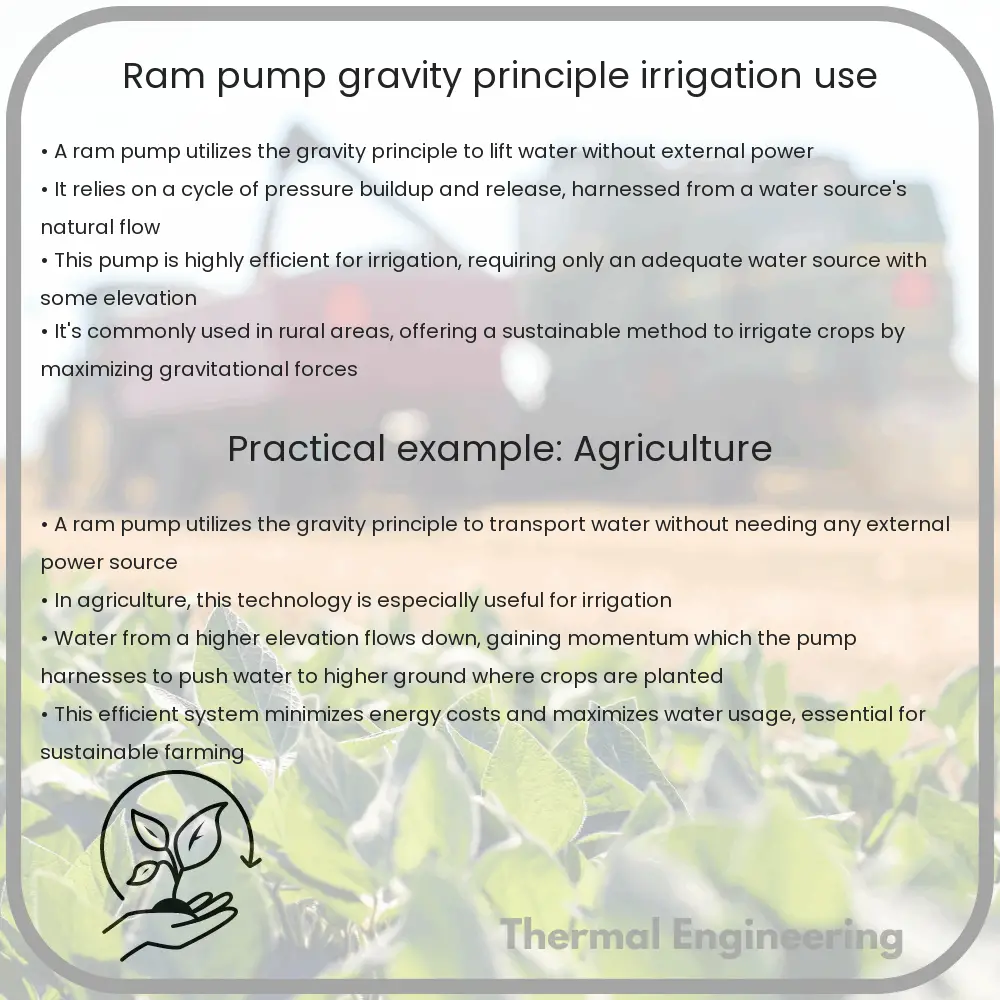Learn how the ram pump, a hydraulic device, utilizes gravity and the water hammer effect to transport water without electricity.

Understanding the Ram Pump and Its Principles
The ram pump, often known as a hydraulic ram, is a fascinating example of utilizing basic physics to achieve practical engineering tasks, such as transporting water to locations without the use of electricity. This device leverages the power of gravity and the momentum of flowing water to pump a portion of that water to heights greater than its original source without using any external energy sources such as electricity or fuel.
How Does a Ram Pump Work?
At its core, a ram pump operates using the water hammer effect—a phenomenon occurring when a flowing fluid is suddenly forced to stop or change direction, creating a surge or spike in pressure. The pump consists of a few main components:
- Inlet pipe (drive pipe): This is the long pipe that channels flowing water from a higher elevation down into the pump.
- Waste valve: This valve, also known as the clack valve, opens and closes under the pressure of moving water, allowing a small amount of water to exit periodically, thereby creating the necessary water hammer effect.
- Pressure chamber: Captures the high-pressure spike caused by the closing of the waste valve. This pressure is used to gradually force some water upwards.
- Delivery pipe: This pipe carries the water that is pumped upward to its storage location or area of use.
The cycle begins with water flowing into the ram pump from the inlet pipe. The water’s flow and gravity force the waste valve to close, which momentarily increases pressure in the pump. The increased pressure opens a delivery valve, pushing some water into the delivery pipe and into the pressure chamber. When the pressure decreases, the waste valve reopens to release excess water and the cycle repeats.
Gravity’s Role in the Ram Pump
Gravity is essential for the operation of a ram pump. It affects both the inlet flow and the pumping mechanism. The water source must be situated high enough above the pump to create adequate pressure and flow speed in the inlet pipe. This kinetic energy stemming from gravity helps create the conditions necessary for the water hammer effect to occur.
Irrigation Use of Ram Pumps
Ram pumps are particularly useful in agricultural practices for irrigation purposes, especially in remote areas where electric power is scarce or non-existent. They can transport water from lower to higher ground, distributing it over farmland that would otherwise be dependent on manual watering or rain. This ability to lift water to substantial heights without using electrical power is not only cost-effective but also environmentally friendly, as it uses no fossil fuels and has minimal environmental impact.
Advantages:
- Energy efficiency: Operates without electricity or fuel.
- Low maintenance: Few moving parts mean it is relatively low maintenance.
- Durability: Can operate for years if properly maintained.
Limitations:
- Initial setup costs: Can be initially expensive to set up, especially if the source of water is quite far from the area of use.
- Dependence on water source: Requires a consistent source of flowing water to operate effectively.
Despite these limitations, the ram pump remains a valuable tool for sustainable agriculture and a classic example of practical engineering that exploits basic physical laws to solve real-world problems.